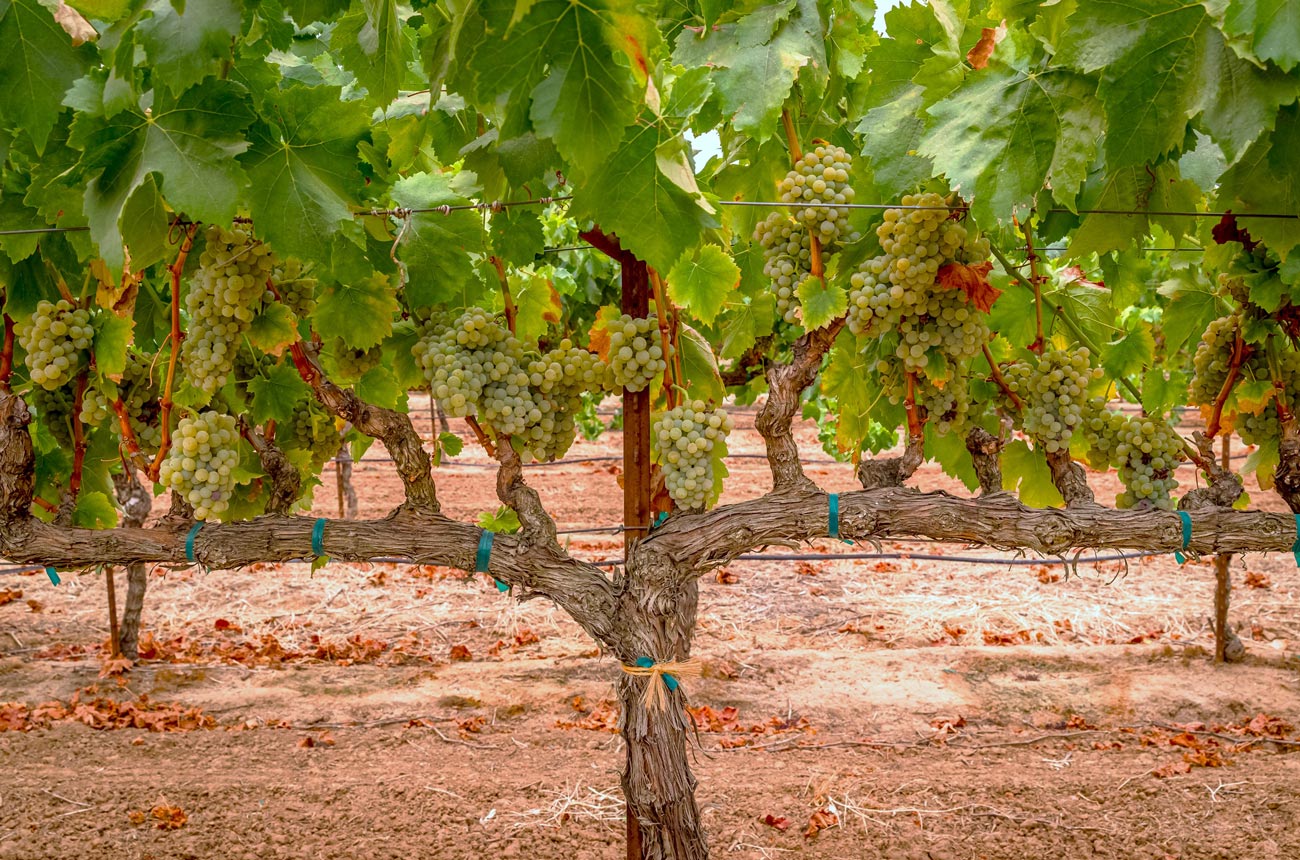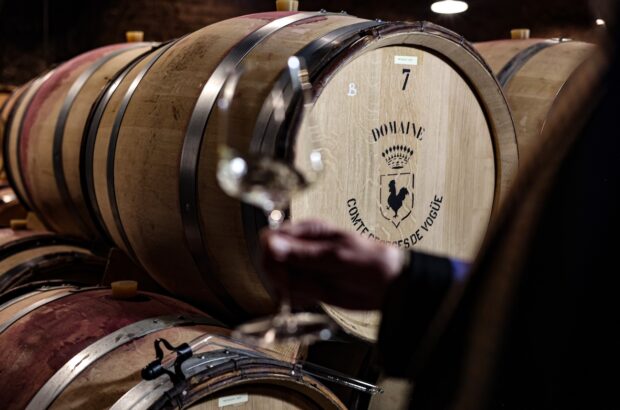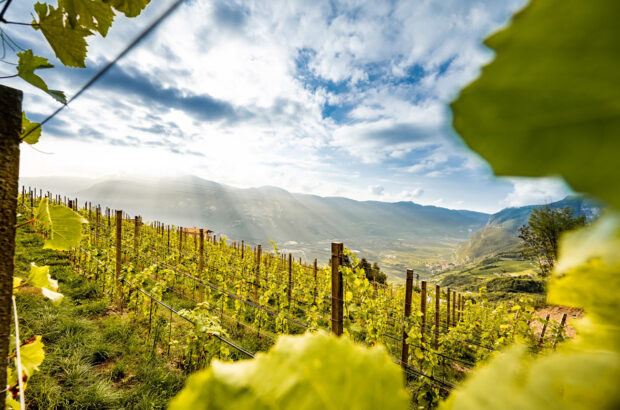In France’s Languedoc, Picpoul de Pinet is one of the oldest varietal wines, produced from the heirloom Piquepoul grape. Stateside, however, the lower alcohol, high acid, dry white wine that translates to ‘lip stinger’ is somewhat of a novelty.
Only recently has it garnered attention from American consumers. Picpoul naturally checks the boxes of the style of wine they’re increasingly seeking; fresh, food-friendly and drinkable on its own.
Scroll down to see tasting notes and scores for seven Picpouls made in America
‘We’ve seen more interest in AOP Picpoul de Pinet because it is a premium appellation of dry, unoaked white wine. It’s a unique, indigenous grape variety, Piquepoul,’ shares Fabien Gross, winemaker of Domaine Villa Noria in Montagnac.
US wineries have planted Piquepoul grapes in the warmest wine regions across the country, which Gross predicts will help grow its overall popularity.
Paso’s early adapter
The first winery to plant Piquepoul in the US was Tablas Creek in Paso Robles, California. It imported cuttings from its partners at Beaucastel for the first harvest in 2003.
‘Of all the obscure white Rhône varieties, it’s one of the ones in which there’s the most interest among consumers and one that sells out fastest,’ explains Jason Haas, partner and general manager. Last year, Tablas Creek produced 600 bottles and sold out in two weeks.
‘Its ability to retain acids in a warm climate like ours is invaluable and in sync with the broader move in the market toward whites with more freshness and higher acids,’ emphasises Haas. He adds that the main issue that the Picquepol grape faces is late ripening in France which isn’t a hurdle in California.
Since Haas laid successful foundations for Piquepoul in the US, it’s inspired other wineries to do the same, like Tres Sabores in California’s Sierra Foothills, Syncline in the Columbia River Gorge of Washington State, and Bending Branch in the Texas Hill Country.
McPherson Cellars in West Texas received its first cuttings through a nursery out of Tablas Creek, explains Kim McPherson, owner and winemaker. They started with 0.8ha, and McPherson says it thrives in the Texas High Plains AVA. ‘The growing conditions aren’t harsh, and there’s no stress on the grapes.’

Piquepoul at harvest time in Acquiese Winery & Vineyards. Credit: Acquiese Winery & Vineyards
In Acampo, California, Acquiesce Winery and Vineyards describes the Picquepol grape as ‘a dream’ that thrives in the Mediterranean climate and sandy, mineral and well-drained soils.
‘When we first opened the tasting room 12 years ago, Picpoul was a difficult sell, but now it sells out every year,’ says Susan Tipton, owner and winemaker. She notes the 300 cases produced and an additional 0.8ha planted this year to keep up with demand.
Regarding attracting consumers, William Allen, founder of Two Shepherds in Sonoma’s Dunnigan Hills AVA, mentions how American millennials and Gen Z constantly seek new, unique options that revolve around more natural products.
Not only does Picpoul fit the bill, but it is versatile in its pairings. ‘It is a good match for all things spicy, salty and fried, making it an enticing option for the foodie- adventurous-wine consumer,’ emphasises Allen.
Bonny Doon Vineyard replaced its Roussanne – which it found to be struggling to produce a reasonable crop due to sunburn – with Piquepoul in the Arroyo Seco appellation of Monterey County’s Beeswax Vineyard.
At first, it was grown to blend with Roussanne and Grenache Blanc. But founder and winemaker Randall Grahm shares that the company, and its customers, preferred the Piquepoul on its own.
‘The style of cartoonish sweet and oaky white wines has perhaps created a counter-momentum for bone dry, crisp and clean white wines, such as one finds with our Picpoul,’ says Grahm.
He says the advantage of producing Californian Piquepoul is that it is less acidic than its French counterpart and more floral, making it ‘slightly more amenable to American tastebuds’.
In addition to Piquepoul’s tolerance to the rising heat in US wine regions, Dr Bob Young, executive winemaker and CEO at Bending Branch points out that Piquepoul Blanc is a prolific grower: ‘It produces higher than average yields on the vine, making it a more sustainable crop for growers and winemakers.’
‘The serious transition is that people are discovering the incredible food compatibility when these same, fragrant notes are attached to a complex, dry wine,’ adds Julie Johnson, owner and winemaker of Tres Sabores.

Harvesting Piquepoul at the Lost Pirogue Vineyard in Texas Hill Country. Credit: Dana Dehoyos
While there are certainly a handful of US wineries now producing Picpoul, it’s still somewhat rare. According to the 2022 California Grape Crush, there were 254-US tons crushed in California. Furthermore, the Picpoul audience is divided.
The East Coast is enjoying French imports while the West Coast attempts to mark a name for themselves using the Picquepoul grape, affirms Grahm.
McPherson shares that there are still hurdles about the grape’s name, with consumers pronouncing it as ‘Pick a Pool’.
‘We have played on this concept by creating a pool-inspired label. It helps consumers remember the name by tying it to a visual. It also makes them want to enjoy a glass by the pool in the hot Texas summers,’ says McPherson.
Along with educating consumers about the new variety, another potential prohibiting factor for American producers is overcropping Piquepoul as its yields can be prodigious, adds Grahm.
Even so, Haas suggests the variety has a great American future. ‘Its combination of great acidity, saline minerality, lovely tropical fruit, and surprisingly rich texture (for a wine with such good brightness) makes it appealing on its own and a great blending component.’







